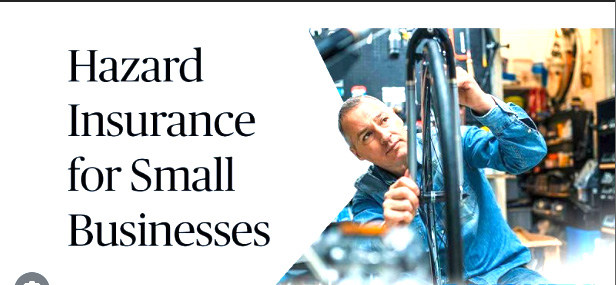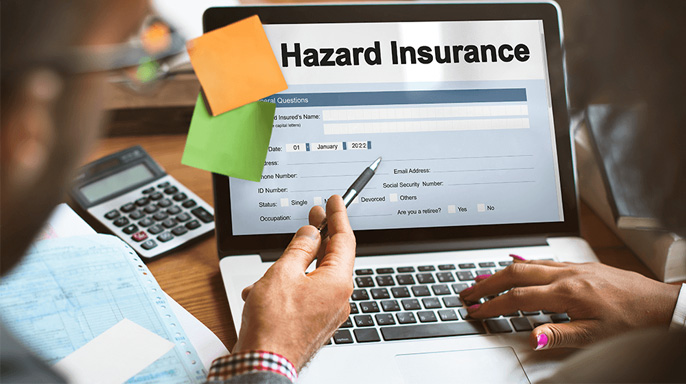Business Hazard Insurance protects companies from losses due to unforeseen events. It covers damages to property and assets.

Securing Business Hazard Insurance is a critical step for entrepreneurs aiming to safeguard their investments. This form of insurance serves as a safety net, offering financial protection against incidents such as natural disasters, theft, or vandalism. For small business owners, it can be the difference between a temporary setback and a permanent closure.
This insurance helps businesses stay stable and focused on growth instead of worrying about potential losses. Managing risk is crucial for all businesses, regardless of their size or industry. It is an important aspect that can be tailored to meet the specific needs of each business. Choosing the right coverage is important for peace of mind and shows commitment to the enterprise’s long-term success.
Credit: www.linkedin.com
Introduction To Business Hazard Insurance
Imagine a world where your business is safe from unexpected dangers. That’s what Business Hazard Insu-rance offers.
It’s a shield protecting your venture from unforeseen events that could cause harm. This insurance plays the role of a safety net, catching falls and providing stability. Business owners gain peace of mind, knowing their establishment is secure.
Why It’s Essential For Your Venture
Your business stands on the pillars of hard work and dreams. small business hazard insurance keeps those pillars strong.
It ensures minor mishaps don’t lead to major setbacks. A stable business is a successful one. This insurance is that stability. It helps your business stay on its feet when challenges arise.
- Keeps operations running after damage or loss.
- Protects financial investment from unforeseen expenses.
- Builds trust with customers and partners, showing you’re prepared.
Common Risks Covered
This coverage is a broad tent, housing many types of protection. It’s tailored to the risks your business might face. Different plans cover different dangers. It’s like picking the right armor for battle.
Type of Risk Coverage Natural Disasters Shield against storms, floods, earthquakes. Theft or Vandalism Protection from break-ins and destruction. Fire Guard against blaze damage and smoke havoc.

Types Of Hazard Insu-rance Policies
Business hazard insurance offers critical protection. Different policies cover a range of risks. It’s essential to understand each type. This ensures the right shield for your business assets.
Property Insurance
Property insurance secures your physical assets. Think of it as a safeguard for your building and everything inside. If a fire or theft happens, this runs to the rescue. Below is a list of assets covered:
- Buildings – The actual structures where your business operates.
- Equipment – From computers to machinery, it’s all included.
- Inventory – Your stock of goods is protected against loss.
- Furniture – Desks, chairs, and fixtures? Covered.
Business Interruption Insurance
When disasters strike, business interruption insu-rance jumps into action. Profit losses and operating expenses get covered. This insurance keeps your business afloat. Here’s what it can take care of:
Area Covered Description Revenue Loss The money you should have made? It’s reimbursed. Rent or Lease Payments Keep your location, even when business is paused.
Employee Wages Support your team, even without daily operations. Loan Payments Financial commitments continue to be met with ease. Liability Insurance
Liability insurance shields you from lawsuits. If someone gets hurt or property gets damaged, this policy steps up. It’s a financial defender for your business. Here’s what it typically protects:
- Legal fees? Paid for.
- Settlement costs? Handled.
- Court charges? Covered.

Determining The Right Coverage For Your Business
Choosing the proper business hazard insurance is like setting up a safety net for unforeseen events. It’s crucial to ensure that the coverage matches the unique needs of your company. A well-tailored insurance policy not only provides peace of mind but also secures your business’s future.
Assessing Your Business Risks
Identify potential threats to your business first. Consider your location, industry, and everyday operations. List these risks and note how severe each could be. This assessment helps pinpoint what coverages to look for in a policy.
Calculating Adequate Coverage
Finding the right coverage level is key. Start by evaluating your business assets and potential income loss from disruptions. Use this information to estimate how much coverage is sufficient. Remember, it’s better to be over-protected than underinsured.
Comparing Insurance Providers
- Research multiple providers. Look at their coverage options closely.
- Compare quotes and read reviews from other businesses in your field.
- Check for customer support and claim process efficiency.
- Choose an insurance provider that aligns with your coverage needs and budget.
Common Exclusions And Riders
When ensuring the safety of your business through insurance, understanding policy details is crucial. Business Hazard Insurance shields your company from unexpected financial strain. Yet, specific incidents and items might not be covered.
These are known as exclusions. Knowing what your standard policy leaves out is just as important as understanding what it covers. Additionally, you should be familiar with riders, adding extra layers of security to your business.
Standard Policy Exclusions
Standard policy exclusions are items or events that your business hazard insurance doesn’t cover. Let’s delve into these typical exclusions:
- Acts of War: Damages from war or war-like actions are excluded.
- Floods: Most policies do not cover flood damage.
- Earthquakes: Seismic events usually require separate policies.
- Intentional Damage: Any harm you inflict on your property intentionally isn’t covered.
- Wear and Tear: Gradual wear isn’t insurable under standard policies.
Additional Coverage Options
Your basic plan doesn’t cover everything. Here are some additional coverage options to consider:
Coverage Type Benefits Flood Insurance Protects against water damage from flooding. Earthquake Insurance Covers losses resulting from earthquakes. Business Interruption Offers compensation for lost revenue during closures. Customizing Your Insurance Policy
To customize your insurance policy, speak with your insurer about adding riders. These are tweaks to your policy that provide coverage for excluded scenarios. They offer a tailored fit for your business needs. Considerations might include:
- Assessing risks unique to your industry.
- Understanding the value of your property and assets.
- Evaluating the potential for lost income during downtimes.

The Claims Process Simplified
Experiencing a loss can be stressful. Business hazard insurance provides a safety net for your business. Understanding the claims process is vital.
You can confidently navigate it with the right knowledge. This section simplifies the steps. Know what to expect when filing a claim, gathering documentation, and working with adjusters. Secure the protection your business needs without unnecessary complications.
Steps To File A Claim
The first step in the claims process is reaching out to your insurance provider. Remember, prompt action is crucial. Follow these guidelines:
- Notify your insurer immediately after the incident.
- Collect necessary information about the event.
- Submit a formal claim following your insurer’s guidelines.
Each insurer may have a unique process. Check your policy or their website for specific requirements.
Documentation And Support
Gathering detailed documentation is a key step. Here’s what you need:
- Prepare a list of damaged or lost items.
- Take clear photographs of all damages.
- Save repair bills, receipts, and relevant emails.
- Record details and dates of any related incidents or losses.
Keep all records organized and ready to present to your insurer.
Working With Adjusters
After filing your claim, an insurance adjuster will get involved. They assess the damage. Keep these points in mind:
Do Don’t Be honest with the adjuster. Oversimplify details. Provide all necessary documentation. Withhold information
. Ask questions to understand their evaluation. Ignore their advice or insights. Building a professional relationship with your adjuster can smooth the process.
Credit: www.facebook.com
Risk Management Strategies
Risk Management Strategies act as a safety net for businesses against unforeseen events. With the right approach, companies can shield their operations, assets, and employees from myriad risks. Business Hazard Insurance forms the cornerstone of these strategies, but it’s merely the starting point. A comprehensive plan integrates preventative actions, regular policy revisions, and comprehensive training programs.
Beyond Insurance: Preventative Measures
Securing insurance is crucial, but proactive risk mitigation is invaluable. Implementing preventative measures cuts the chances of incidents before they occur. This strategy not only saves costs but also fortifies the business’s resilience. Here are some top measures:
- Regularly assess workplace hazards to stay ahead of potential risks.
- Keep maintenance schedules for equipment to prevent failures.
- Implement safety protocols tailored to each business operation.
Regular Policy Review And Updates
Change is constant in business environments. Hence, policy reviews are essential to ensure insurance coverage evolves with emerging risks. Best practices include:
- Annual policy evaluations to keep the cover current.
- Review coverage post significant business changes.
- Add riders or specialized policies for new risks.
Employee Training And Safety Programs
People are a company’s greatest asset. Therefore, investing in employee training and safety is non-negotiable. This training ensures staff know how to prevent and respond to hazards. Key elements include:
- Ongoing safety education to reinforce good practices.
- Emergency response drills to build preparedness.
- Health and wellness support to foster a proactive safety culture.
Credit: medium.com
Frequently Asked Questions On Business Hazard Insu-rance
What Is Hazard Insurance On A Business?
Hazard insurance for a business protects against property damage from fires, storms, theft, and other disasters. It helps cover repair costs and minimize financial losses.
What Is Covered Under Hazard Insu-rance?
Hazard insurance typically covers damage to a property from natural disasters, fire, theft, and vandalism. It usually addresses structural repairs and replacement costs for a homeowner’s dwelling.
What Is Sba Hazard Insurance?
SBA hazard insurance is a coverage requirement for businesses that secure loans through the Small Business Administration. It protects against potential property damage from natural disasters or unforeseen events.
What Does Business Catastrophe Insurance Cover?
Business catastrophe insurance provides financial protection against major disruptions, covering losses from events like natural disasters, terrorism, and large-scale accidents.
Conclusion
Securing your business with hazard insurance is not just prudent; it’s essential. It provides a safety net for the unforeseen, protecting your operations and assets. As you navigate the complexities of entrepreneurship, consider this coverage your ally against the unpredictable.
Don’t wait for a disaster to remind you of its value – act now to safeguard your company’s future.